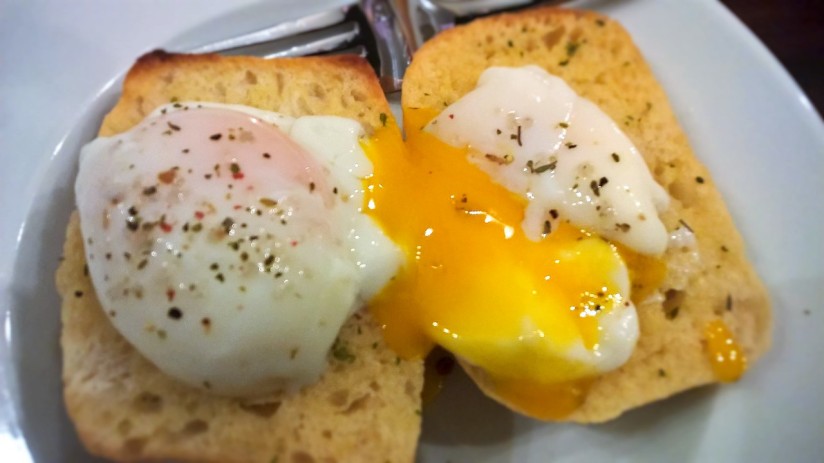That’s Celsius, not Fahrenheit. Popping up everywhere in chic restaurants. What is the fuss all about? Armed with my Sansaire and a dozen farm fresh eggs, I decided to find out for myself.
Sometimes called a sous vide egg, the real correlation is the immersion cooking. Eggs cooked with an immersion circulator don’t need to be vacuum sealed as in a sous vide preparation (sous vide translates loosely to vacuum sealed). Eggs are already sealed perfectly in their own shell. This is a method for cooking eggs at a consistently precise temperature.
I decided to start experimenting with my eggs and varying water temperatures. Does cooking time matter? Yes, it factors in with eggs and immersion cooking. You cannot leave the eggs in the water for hours without changes in the consistency. Conversely, you can cook them to the temperature you desire and refrigerate them for a day or two until you are ready to serve. For this round of testing, I let my eggs cook in their hot bath for one hour.
Experiment #1 – 62 deg. Celsius: Poached Eggs over Garlic Ciabatta
There is nothing better than a smooth, silky egg yolk opened over practically any food. Tonight it is garlic ciabatta toast – I cheated and used the New York kind I had in my freezer.
2 farm fresh eggs, room temperature
Garlic ciabatta toast, or any toast you prefer
Freshly ground salt and pepper
Set your Sansaire (or other immersion circulator) to 63 deg. Celsius, 143.6 deg. Fahrenheit; and take the eggs out to reach room temperature. It will take a bit to reach this water temperature depending on how much water you are using. At temp, slowly lower the eggs into the water using a ladle. Remember, they are fragile hitting water of this temperature. Set a timer for one hour on the eggs.
With about 10 minutes left on the timer, prep the toast. Keep it warm in the oven until ready to plate.
After an hour, remove the eggs from their hot bath. Crack the largest end of the egg on the counter, and start to gently peel it. Once you have the large end peeled, let your egg slowly slide out onto a large spoon or ladle. You will notice that the runny part of the white is not completely set; this can be discarded. The thicker part of the white will be just set.
These little guys are surprisingly resilient; but do be careful with them. The first one I peeled rolled right off the piece of toast and I was afraid it was going to break the yolk. I chased it around the bowl with my ladle and got it back onto the toast, unbroken. Sprinkle with freshly ground salt and pepper to taste; I used Savory Spices’ Cantanzaro Herbs Seasoning Salt.

The consistency of the egg yolk? Creamy, dreamy, and utterly delicious. The bright orange, silky yolk was the perfect complement to the toast. Distinctly different than a standard poached egg; this method is definitely now my preferred method for poaching. Enjoy!
